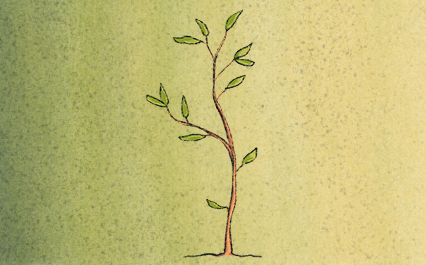Page Content
Trauma from Fort McMurray wildfire gives way to growth
Nearly four years after Fort McMurray schools were evacuated under smoke-filled skies, something new is in the air—a feeling of hope.
“We’re a healthier school district. We’re better able to handle challenges. We’re no longer reacting to a crisis,” explains Shannon Noble, assistant superintendent for Fort McMurray Public Schools.
School officials say that the changes in Fort McMurray reflect a phenomenon known as post-traumatic growth, a psychological transformation that can develop as a consequence to a traumatic event.
Although the term was coined by two American psychologists in the early 1990s, the concept of post-traumatic growth has appeared in religious and philosophical teachings for thousands of years. It’s also a recurring theme in pop culture and literature: heroes, like Batman, for example, experience traumatic events that motivate them to greater things.
Post-traumatic growth involves a positive response in at least one of five ways: embracing new opportunities, an appreciation for life, improved personal relationships, increased emotional strength and spiritual change.
Not everyone who encounters trauma experiences positive growth afterward. There’s no clear explanation why, but some research suggests the positive outcomes result from a person turning inwards and assessing their traumatic experience over time.
Natalie Doucette, a school counsellor in Fort McMurray and a specialist in counselling psychology, uses the analogy of a plant. A plant grows organically without requiring thought. Likewise, the psychological changes that contribute to post-traumatic growth can happen organically and can’t be coached.
“But when you bring awareness to that process, it increases its positive outcomes,” she said.
It’s only in the last decade that researchers have begun to examine post-traumatic growth in children, but the evidence suggests that the phenomenon can happen in children after all kinds of trauma.
Trauma forever changes a person and should never be considered desirable, but some changes can be beneficial in the long term, Doucette says.
 “You don’t forget about what happened, but you can move on and grow from it,” she said.
“You don’t forget about what happened, but you can move on and grow from it,” she said.
After the Fort McMurray wildfire, officials in the community employed trauma-informed practices that can foster the type of inward assessment that promotes post-traumatic growth. The result has been stronger community bonds and better mental health supports in schools. Students and teachers are encouraged to talk more about their personal experiences and struggles, and there’s a heightened awareness in the community about the effects of trauma and the need for support.
“Our experience shed a positive light on the connection of humanity when something goes wrong,” Doucette said. “I saw a growth in our community’s willingness to be open and connect with each other.”
But dealing with trauma isn’t a linear, one-way process. It’s complex and typically involves a combination of improvements and setbacks. Noble and her colleagues initially predicted one to four years for recovery, with setbacks along the way. Today Fort McMurray is still coming to terms with the loss from the fires. Its recovery has been further slowed by the province’s economic downturn, which hit the community especially hard.
“We’ve had a kind of layered trauma that means people are still struggling,” Noble says.
“I learned that trauma has both direct and subtle effects on individuals, at times causing very overt responses and struggle, but for others, a more silent form of suffering can emerge over time, resulting in broken relationships, addictions, depression, anxiety and illness.”
— Natalie Doucette, school counsellor,
Fort McMurray
Useful tips
Teachers can nurture post-traumatic growth in the following ways:
- Help all students become involved in activities that will help them feel that they are contributing positively to the class/school/greater community. This helps students gain control over their thoughts and feelings and begin thinking about the future again.
- Plan low-risk activities where students work together to create, build, etc. This creates an environment in which students can feel genuinely accepted by their peers.
|
Growth on a global scale
As an example of post-traumatic growth from Fort McMurray’s wildfire experience, last summer school counsellor Natalie Doucette delivered a trauma-informed practice course to school staff on the Caribbean island of Dominica, which had been severely damaged by Hurricane Maria. Her visit was organized by the
IT for Dominica Foundation, which partners with the ATA’s Project Overseas to send Alberta teachers to Dominica
every summer.
Doucette hopes to return this summer
and continue her work through a post-
traumatic growth perspective.
“All of this experience we’ve gained in Fort McMurray can inform and support another community in need post-disaster,” she said.
